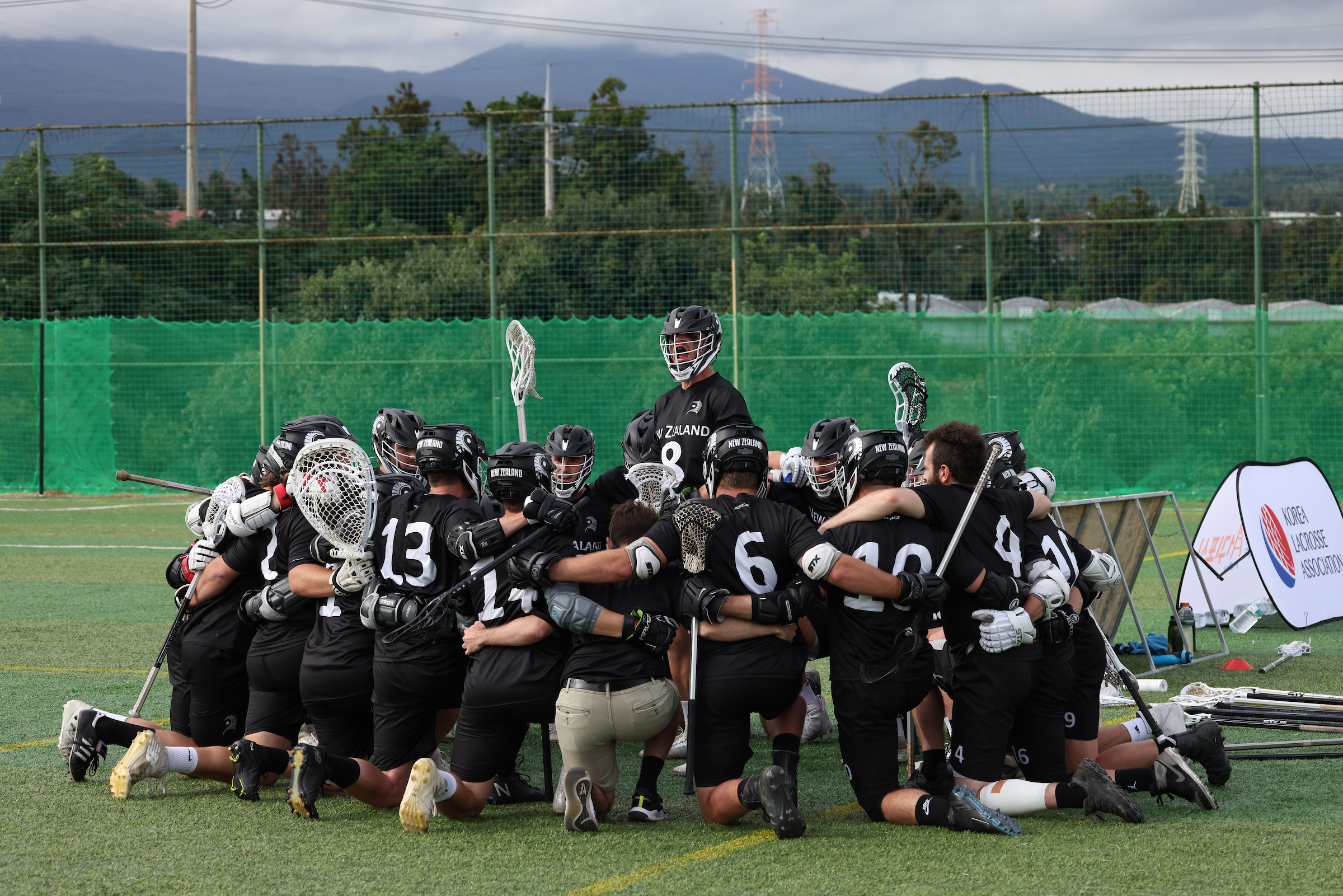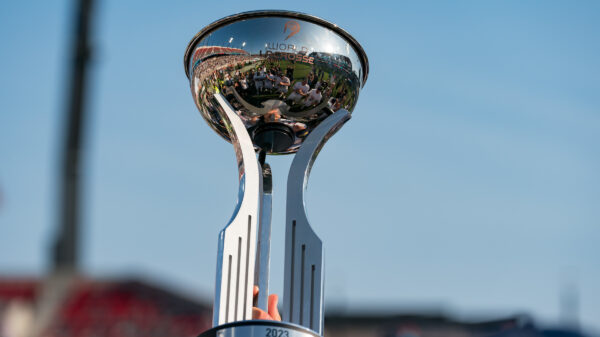World Lacrosse is highlighting the journeys of teams that qualified for the 2023 World Lacrosse Men’s Championship, set to take place in San Diego in June.
New Zealand has competed in the last five World Lacrosse Men’s Championships dating back to 2002, and it is tied for the 11th most appearances in the tournament among the 47 teams to have participated.
That history, which includes a 12th place finish in 2014, led to pressure and an expectation within New Zealand Lacrosse to return to the biggest stage in the men’s game. But for the first time in World Lacrosse history, the road to the 2023 Men’s Championship included continental qualifiers, and the growth of the teams in the Asia Pacific Lacrosse Union meant there were no guarantees of getting back to the summit.
After three games at the APLU qualifier in October in Korea, New Zealand had suffered two narrow one-goal losses and found itself on the brink of elimination despite its history.
“It was dead silent on the bus ride home,” said assistant coach Andy Muir. “It was a low moment, and everyone knew there was no mucking around now. We had a team meeting that night and there was some real soul searching going on.”
Muir’s journey to his role on the national team reflects the pathway for lacrosse development in New Zealand. He started playing in 2002 at the club level, when organized lacrosse in New Zealand was only two years old. He played for the national team in two world championship cycles (2010 and 2014), and transitioned into management and assistant coaching at the club and national level.
His experience – totaling near 20 years – is a hallmark of the lacrosse community in New Zealand, which is extremely tight knit and focused on growing the sport. Most players in the country pick up the game in high school, so rapid development is crucial at that age through a robust club system.
Most national team players come through this infrastructure, which is bolstered by a U18 squad that identifies the top young players and has them train together and compete against clubs and state-level teams in Australia, the most accessible opponent.
Giving standout club players a higher standard of competition is crucial to building a homegrown roster that can be one of the best in the region and compete with the world’s top teams, Muir summarized.
However, as with many countries, the COVID-19 pandemic slowed development in terms of resources – both time and material – and competition against other teams with closed borders. New Zealand was still able to train twice a week for four months in preparation for the qualifier with a core group of club-based athletes, but there were no traditional measuring sticks.
New Zealand’s focused preparation and established talent pool mixed with the pandemic’s uncertainties and the development of lacrosse around the region put the team in a unique spot.
“The absolute expectation was to qualify for the world championship,” said Muir. “It’s clear that the competition elsewhere was raised significantly and consistently. But we didn’t know what we were going to encounter, and which teams specifically would be strong.”
The burden of pressure bore its full weight quickly at the qualifier. The opening game was a one-goal loss to host Korea, which had finished 14 spots below New Zealand at the 2018 Men’s Championship. After a win over Chinese Taipei and another one-goal loss to Hong Kong, China – which had finished six spots behind New Zealand in 2018 – New Zealand was reeling.
That silent bus ride home was the crux of expectations versus execution. And the latter had to change.
“At some point the talk has to stop and we had to go out and perform,” Muir said.
The team’s struggles were in the margins, as the overall level of play in two one-goal games was not the main issue. But integrating the core group of players who had trained together in New Zealand with a handful of American-based athletes in such a brief time was a challenge, and so in turn was getting the offense synchronized, an issue compounded by the strong level of goalkeeping in the event.
The staff adjusted by focusing on improved shot selection and generating shots off movement, and defensively raising the intensity level to make it harder for opponents to score. These are small tweaks, some tactical and some psychological, but the New Zealand coaches saw their team’s confidence and just needed them to trust their training and principles.
“A lot of what we do is based on local Kiwi culture, which is playing as a team,” said Muir. “We want guys to stand out and step up, but it’s not about trying to do it yourself. It’s about trusting the team, the process, and the organization around you. The word we use in New Zealand is ‘mana,’ which is about self-belief, but we want it to be about the belief in what we try to achieve.”
Muir noted that all the time training together meant that wholesale changes were not needed. A commitment and trust in the team’s mission would lead to the small tweaks resulting in improved execution.
Staring down elimination, New Zealand pulled out its final two games both by just one goal: a 5-4 win over the Philippines, the 10th place finisher at the 2018 Men’s Championship, and an 8-7 win over China on the final day to cement the team’s place in the field in San Diego in 2023.
“It was really pleasing that we started performing and putting the ball in the back of the net,” said Muir. “It could have gone either way if the guys didn’t respond in the right way.”
New Zealand heads into next year’s championship battle-tested with a squad it thinks can compete at the next level. Additionally, the dividends for its players competing against and learning from top talent will be immense and will continue the trajectory of New Zealand Lacrosse by setting the standard to which players can aspire.
“There’s a reason everyone was playing so hard and intensely at the APLU qualifier,” said Muir. “Nowadays, it is not easy to get there. We’re excited about being able to go back and compete at the top level against the world’s best players. That is something you don’t get to do in most sports.”







